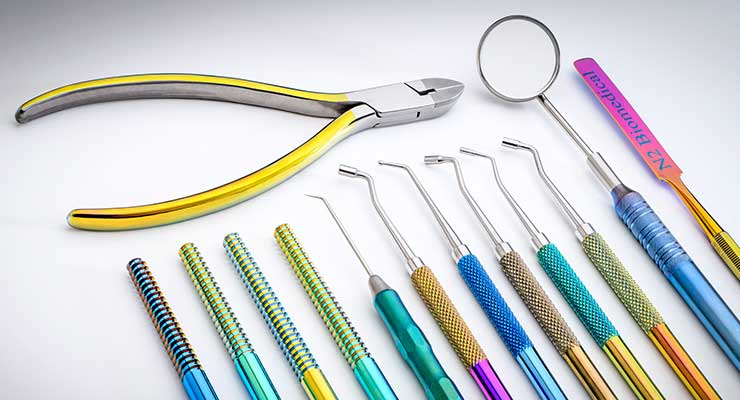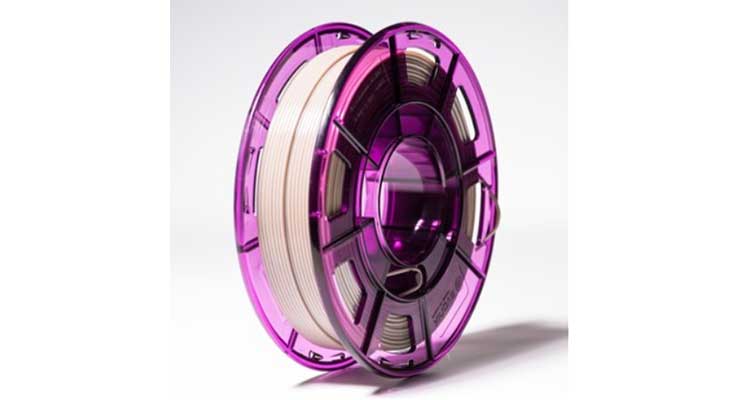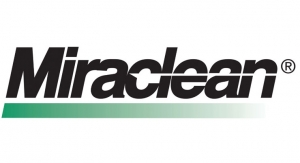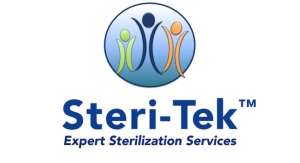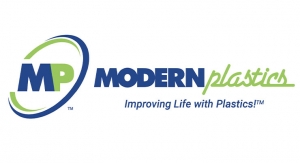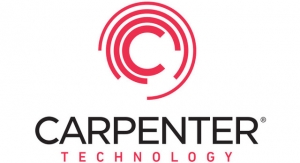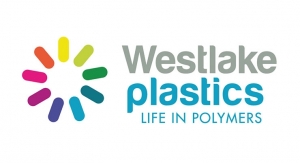Mark Crawford, Contributing Writer11.18.20
Materials are critical considerations for orthopedic device design. Material suppliers are releasing such a wide variety of engineered materials that it can be difficult for orthopedic designers to keep up with the latest advances in material science. OEMs often depend on their contract manufacturers and material suppliers for the latest expertise when it comes to selecting the optimal material to achieve all performance expectations, at the right price.
Although there are plenty of “tried and true” materials with good strength, fatigue, and biocompatibility, as orthopedic products become more complex, they often require the highly engineered physical properties that advanced materials provide. For example, durable nano-engineered materials can provide a variety of performance enhancements, including improved biocompatibility, osseointegration, anti-microbial properties, and wear resistance.
“We also see an increased trend toward using surface modification to enhance the performance of orthopedic materials, including metals and polymers,” said Nader M. Kalkhoran, director of technology for N2 Biomedical, a Bedford, Mass.-based provider of medical device coatings and surface treatments for the medical device industry. “Since surface modification is often carried out as a final step in device manufacturing, the disruption to existing product manufacturing lines is minimal.”
Latest Trends
One of the hottest trends in orthopedic design is the migration toward 3D printing of titanium, especially for spinal interbody devices. 3D printing provides the manufacturing freedom to create lattices, porous channels, and rough surfaces that enhance osseointegration and promote healing at the implantation site. Titanium with improved wettability and enhanced biocompatibility reacts more favorably in-vivo than polyether ether ketone (PEEK), which has been the go-to material for certain spinal applications.
There are, however, two main challenges with Ti-64 Grade 23 as it relates to 3D printing: 1) powder oxidation in process, causing brittleness and cracking, especially in fine-resolution features, and 2) oxygen pick-up during the AM process itself.
“Carpenter Technology has developed a proprietary Ti Grade 23+ powder that uses optimized chemistry and tailored parameters to decrease the propensity of cracking,” said Brent Marini, strategic business developer for medical products for Carpenter Technology, a Philadelphia-based provider of high-performance, alloy-based materials for the medical device industry. “This is achieved with a lower original O2 content to provide extended life, without sacrificing finished mechanical properties. The Grade 23+ powder also allows OEMs to realize fine features and complex designs that would fail using regular Grade 23 powder.”
PEEK continues to evolve, especially for 3D printing. PEEK’s properties are similar to human bone, making it ideal for implants.
“Medical-grade plastic filament for additive manufacturing is a hot trend, especially Evonik’s permanent implantable PEEK filament,” said Bing J. Carbone, president of Modern Plastics, a Shelton, Conn.-based provider of high-performance, engineered plastic shapes and materials for the medical device market.
This 3D-printable PEEK filament is implant-grade material for medical applications and meets the requirements of ASTM F2026 (the standard specification for PEEK polymers for surgical implant applications). Developed for fused filament fabrication (FFF) technology, this PEEK material retains its biocompatibility, biostability, and X-ray transparency. “For modern medical technology, the development of our first 3D-printable implant material opens up new opportunities for customizing patient treatments, including orthopedics and maxillofacial surgery,” stated Marc Knebel, head of the medical devices and systems market segment at Evonik.
Materials processing using ion implantation is gaining significant attention because it can be applied to virtually all types of metal implants to enhance their wear and fretting resistance, as well as reduce surface friction. This is especially valuable for lessening the impact of metal exposure to people who are sensitive to metals, including titanium and cobalt. When untreated in a device, titanium exhibits relatively low wear resistance and is susceptible to fretting wear. N2 Biomedical’s proprietary IonGuard ion implantation-based process utilizes direct ion beam bombardment to create a hard, low-friction, titanium surface with a wear performance comparable to cobalt-chromium devices.
“Energetic nitrogen ions are embedded into the surface of titanium implants,” said Kalkhoran. “Since no coating is deposited in the process, the surface enhancements are gained without the risk of delamination. In fact, the FDA has recommended the use of nitrogen ion implantation treatment for articulating titanium femoral components in order to reduce the production of metallic particles and the resulting adverse tissue response and high third-body wear.”
The European Union (EU) has voted to classify cobalt as a Class II RMR substance. In 2021, when the EU Medical Device Regulation is expected to be implemented, all medical devices containing more than 0.10 percent cobalt in the alloy composition must be labeled as a carcinogenic, mutagenic, and reproductive toxin. Although cobalt-chrome-molybdenum (CCM) and several different implantable stainless-steel alloys have extended histories of safe clinical use, OEMs are now seeking cobalt alloys with the same wear resistance and strength, but that contain less than 0.1 percent cobalt to meet these new regulatory requirements.
Carpenter Technology has refined its melting practices to “introduce low-cobalt versions of several traditionally used stainless steel alloys such as the 300 series, 400 series, 17-4, Custom 455, Custom 465, and others,” said Gaurav Lalwani, applications development engineer for Carpenter Technology. “Additionally, our Biodur 108 is essentially a nickel- and cobalt-free material with high strength and corrosion resistance. Specifically developed for patients with metal sensitivities, it is already FDA-approved for implantable applications.”
“Also, according to the Centers for Disease Control [CDC], approximately 12 percent of the patient population is allergic to nickel, so Biodur 108 is compatible for these patients as well,” added Marini.
What OEMs Want
OEMs are always focused on quality, performance, and validations of materials and processes that will speed along regulatory approvals.
“With ever-increasing regulatory scrutiny, device manufacturers want the data on how materials perform over time, and how the material performs after cleaning and sterilization, particularly if it is intended to be reprocessed and reused,” said James Fagan, market director for life sciences for Westlake Plastics Company, a Lenni, Pa.-based manufacturer or thermoplastic rod, sheet, and film stock shapes. “This is another way to reduce risk, in addition to seeking biocompatibility testing on the stock shape material.”
OEMs are looking for materials that will reduce cost and improve performance—for example, wear resistance, strength, and part geometry are critical characteristics for designers to consider. Multiple components are often made from different materials, which must complement each other—for example, bone integration in combination with anti-microbial capabilities.
“Material innovations continue to provide exciting progress in biocompatibility, comfort, mobility, and production cost reduction,” said Giles Dillingham, chief technology officer for BTG Labs, a Cincinnati, Ohio-based company that delivers adhesion and cleaning quality control solutions for medical device manufacturers. “For example, advanced materials are decreasing the reliance on mechanical fasteners and, through adhesive bonding, lighter weight and more durable products are being produced.”
In response to frequent OEM requests for durable color coatings on stainless-steel devices and instruments (which, unlike their titanium or aluminum-based counterparts, cannot be color-anodized), N2 Biomedical developed its physical vapor deposition-based Spectrum process that can produce all the interferometric color tones expected from anodization, but without the need to expose the device to a corrosive environment. This durable coating can be applied to any reflective substrate, including stainless steel-based devices and instruments, as well as metal-coated polymers. These thin ceramic coatings are ideal for facilitating product differentiation, enhancing aesthetics, and elevating functionality. The coating is also biocompatible and may offer functional improvements as well, such as reduced friction, corrosion, and wear; it is also very durable, at over 200 cleaning and autoclave cycles.
OEMs are concerned about the negative effects of cleaning processes on assembly procedures such adhesive bonding, which is an essential process for many medical devices. As new designs, materials, and surface-cleaning technologies come onto the market, it has never been more important to validate bonding processes—preferably at a larger scale that more accurately reflects the dynamics of the production process. OEMs seek technology to facilitate scaling processes up to the production level and that also allow quantitative, objective control of processes like cleaning, surface treatment, coating, and bonding. Laboratory and pilot scale processes are developed and performed by highly skilled and highly motivated workers on a limited basis.
“The processes never behave the same when moved to production,” said Dillingham. “Using the same measurement technology to create a fully verified process and control the process when scaled to production translates into huge cost savings over the life of a product.”
Orthopedic manufacturers will often work with resin suppliers and material companies to produce proprietary custom polymer blends or metal alloys for a specific quality or application, such as lubriciousness, hydrophilicity, and antithrombogenicity.
“As a material innovator, we would like to see more engagement with the OEMs prior to or during the design phase,” said Marini. “Sometimes design engineers have a set material in mind for use prior to design, as it is what is familiar to them. If we can work with that OEM upfront and truly understand the form, fit, and function of the intended device, we can help identify modifications to existing materials through condition or chemistry and/or develop a novel solution that benefits both parties and ultimately enhances patient outcomes.”
Technology Advancements
Although it is not entirely new technology, learning how more materials respond to “cold-working” has been an advancement that has positively impacted the industry. This metal working process produces ultrafine sub-micron grain structures via intense plastic straining, usually at room temperature, without changing the shape or dimensions of the worked material. For example, Custom 465, a high-strength PH stainless steel, responds extremely well when subjected to cold-working, with significantly improved ultimate tensile strength and yield strength.
“Custom 465 in the cold-worked condition is being used so prevalently that ASTM revised its A564 specification, to have the condition specifically called out,” said Marini. “We have also studied this effect on other medical alloys used in the orthopedic space, including Biodur CCM [ASTM F1537], Biodur 108 [F2229], Conichrome [F1058], L-605 [F90], and MP35N F562]. All of these alloys respond favorably to cold-working. Elevated strength properties can be achieved, and even tailored to the application, depending on the needs of the OEM. The impact of cold-working to enhance mechanical properties needs to be discussed and explored for other materials and demanding applications.”
New developments in titanium processing include equal channel angle process (ECAP) or equal channel angular extrusion (ECAE), two types of cold-working. These methods can alter the microstructure of metals and alloys, thereby improving their strength, without reducing the cross-sectional area of the deformed workpiece, which is an advantage over “hot” deformation processes such as extrusion, forging, and rolling. Die design is critical for cold-working because of the large forces required to create the deformation.
Magnesium alloys are promising materials for use in absorbable implants. Biodegradable magnesium materials offer significantly enhanced mechanical properties for orthopedic applications compared to their biodegradable plastic counterparts; the drawback, however, is magnesium and magnesium alloys degrade too quickly in the body and do not retain their mechanical properties long enough for most structural orthopedic applications. They also tend to be low strength and low ductility.
There are several ways to overcome these deficiencies for magnesium alloys. Ultrafine-grain variants of magnesium alloys can be created using ECAE/ECAP to strengthen their mechanical properties, including corrosion resistance. Another approach is using coatings to make magnesium implants harder and longer-lasting—for example, N2 Biomedical is developing coatings that both slow down the degradation rates of magnesium materials to acceptable levels for orthopedic applications as well as enhance the biological interactions of the magnesium-based devices with the body.
In general, materials that are engineered at the nano-scale offer better performance as compared to materials that have been processed on a micro- or macro scale. By understanding the interactions between the smaller building blocks of a material and their surrounding at the nano-scale, various physical and chemical properties can be engineered to more effectively bring about the desired performance.
“For example, by engineering titanium layers on a nano- or meso-scale level to control the texture and surface topography, we can produce a material system that has the potential to not only enhance bone integration, but also reduce biofilm formation,” said Kalkhoran. “Also, nano-crystalline forms of materials, in particular metals, have been shown to exhibit a higher level of hardness and enhanced super-plasticity as compared to the micro-crystalline form, which leads to improved wear resistance and durability.”
Even though it has made tremendous gains over the last several years, AM/3DP is still far from perfect—for example, it has trouble producing parts with the same properties and dimensions from start to finish, consistently, every time, or producing clean parts with no residues or contamination. A potential drawback to AM-made products is how the AM materials can be significantly more susceptible to contamination compared to an equivalent machined or injection molded part.
“If the raw materials used in additive manufacturing are not of precisely controlled composition, even at the parts-per-million level, migration of additives and contaminants from the bulk to the surface [blooming] can result in unintended surface composition,” said Dillingham. “Also, the frequently granular structure means that AM structures can have significantly higher surface area, and because surfaces are chemically reactive, they promote sorption and migration. This vulnerability, and the micro-textures of the AM surfaces, can make them significantly more difficult to clean than equivalent molded or machined parts.”
As additive manufacturing (AM) gains widespread adoption, there is also greater need for solutions that allow powder genealogy visibility, especially when powders from multiple batches/lots are being blended and reused several times for numerous builds across the production run. The chemistry of powder changes as it is used, and the more times it is used, the more it degrades, affecting mechanical properties. This issue of powder lifecycle management directly addresses some of the FDA concerns around minimizing risk in the additive process. In response, Carpenter Technology has developed the PowderLife suite of hardware and software solutions that address this risk, with a focus on improving production yields and reducing costs for the OEMs and contract manufacturers.
“PowderLife is a closed-loop powder handling system that provides the visibility of powder usage paired with decanting solutions that limit powder exposure to the environment where it can pick up moisture or be contaminated, as well as put operators at risk of powder exposure,” said Lalwani.
Nitinol 3D printing has been a huge challenge for the medical device industry, with issues around translation of wrought mechanical properties and realization of shape memory/superelasticity effect in a 3D-printed component. Strategies that address the evolution of nitrogen during atomization (powder production) and 3D printing needed to be developed. Carpenter Technology’s recent advances in powder production and optimized printing parameters through controlled laser energy deposition make it possible to achieve fully dense builds with the desired transformation temperatures and shape memory/superelasticity properties. This is especially beneficial for a complex alloy system like nitinol.
“Success in additive manufacturing of nitinol will eliminate several challenges associated with traditional nitinol processing, such as work hardening, and will provide design engineers the freedom to develop a complex and intricate 3D-printed nitinol device that can exhibit the desired transformation effects,” said Lalwani.
Innovation Continues
Next-generation manufacturing technologies such as 3D printing are already redefining the scope of medical device design and production, with a focus on improving patient outcomes. A majority of the additively manufactured devices that exist on the market today use titanium alloys. New material systems have been developed and optimized for AM. For example, alloys that were once difficult to print are now on the horizon of being suitable for mass production. Challenges around access to high-quality powder and printing strategies to maintain high nitrogen content in the finished component have been solved—recent results show it is possible to print complex surgical tools and guides that traditionally were manufactured using wrought strategies with cold working.
Some OEMs believe there is little flexibility when it comes to improving or tailoring material properties to fit a demanding end application. Several strategies exist that can improve material properties within the approved ASTM specifications, such as modifications in chemistry and trace element composition along with optimized processing pathways. Additionally, strategies such as surface coatings (e.g., nitriding, carburizing, antibacterial coatings) can be applied to further improve the end device performance.
“Another aspect is the cross-functional use of material systems,” said Lalwani. “For example, if the device design criteria are well-defined, OEMs can also look at alloys that are traditionally used in other industries, such as aerospace, to see if they can fit a given medical application.”
Many deficiencies of bulk materials can be addressed through surface modifications, which are often overlooked by device designers. During product development, engineers might assume they are constrained by the basic physical, mechanical, chemical, and aesthetic properties of the bulk material, but adding a coating or surface treatment can sometimes impart attributes to the material that lie outside the range of the material’s “textbook” properties. This is why having a strong partnership with a contract manufacturer or material supplier is so important, especially when they share their expertise during the design for manufacturability stage.
Another challenge moving forward is evolving regulatory standards. For example, although implementation of the EU’s MDR 2020 has been delayed until May 2021, device manufacturers have been hard at work to ensure conformance of their products. “One area that could affect materials and material providers is the need for device manufacturers to provide higher levels of clinical safety, and efficacy testing,” said Fagan. For example, device manufacturers, in addition to seeking material property data showing how the product performs over time from extensive reprocessing cycles, may also be required to demonstrate biocompatibility compliance throughout the device’s lifecycle all the way until end of life.
There are numerous examples of potential breakthrough advances in orthopedic materials, primarily in the area of biologics and synthetic biological materials. “These advanced technologies often face significant regulatory headwinds and are rarely brought to market,” observed Kalkhoran. “However, enhanced orthopedic devices with multi-functional nano-engineered coatings and treatments can provide significant performance advantages, resulting in faster regulatory pathways and shorter timelines to the market.”
Mark Crawford is a full-time freelance business and marketing/communications writer based in Madison, Wis. His clients range from startups to global manufacturing leaders. He also writes a variety of feature articles for regional and national publications and is the author of five books.
Although there are plenty of “tried and true” materials with good strength, fatigue, and biocompatibility, as orthopedic products become more complex, they often require the highly engineered physical properties that advanced materials provide. For example, durable nano-engineered materials can provide a variety of performance enhancements, including improved biocompatibility, osseointegration, anti-microbial properties, and wear resistance.
“We also see an increased trend toward using surface modification to enhance the performance of orthopedic materials, including metals and polymers,” said Nader M. Kalkhoran, director of technology for N2 Biomedical, a Bedford, Mass.-based provider of medical device coatings and surface treatments for the medical device industry. “Since surface modification is often carried out as a final step in device manufacturing, the disruption to existing product manufacturing lines is minimal.”
Latest Trends
One of the hottest trends in orthopedic design is the migration toward 3D printing of titanium, especially for spinal interbody devices. 3D printing provides the manufacturing freedom to create lattices, porous channels, and rough surfaces that enhance osseointegration and promote healing at the implantation site. Titanium with improved wettability and enhanced biocompatibility reacts more favorably in-vivo than polyether ether ketone (PEEK), which has been the go-to material for certain spinal applications.
There are, however, two main challenges with Ti-64 Grade 23 as it relates to 3D printing: 1) powder oxidation in process, causing brittleness and cracking, especially in fine-resolution features, and 2) oxygen pick-up during the AM process itself.
“Carpenter Technology has developed a proprietary Ti Grade 23+ powder that uses optimized chemistry and tailored parameters to decrease the propensity of cracking,” said Brent Marini, strategic business developer for medical products for Carpenter Technology, a Philadelphia-based provider of high-performance, alloy-based materials for the medical device industry. “This is achieved with a lower original O2 content to provide extended life, without sacrificing finished mechanical properties. The Grade 23+ powder also allows OEMs to realize fine features and complex designs that would fail using regular Grade 23 powder.”
PEEK continues to evolve, especially for 3D printing. PEEK’s properties are similar to human bone, making it ideal for implants.
“Medical-grade plastic filament for additive manufacturing is a hot trend, especially Evonik’s permanent implantable PEEK filament,” said Bing J. Carbone, president of Modern Plastics, a Shelton, Conn.-based provider of high-performance, engineered plastic shapes and materials for the medical device market.
This 3D-printable PEEK filament is implant-grade material for medical applications and meets the requirements of ASTM F2026 (the standard specification for PEEK polymers for surgical implant applications). Developed for fused filament fabrication (FFF) technology, this PEEK material retains its biocompatibility, biostability, and X-ray transparency. “For modern medical technology, the development of our first 3D-printable implant material opens up new opportunities for customizing patient treatments, including orthopedics and maxillofacial surgery,” stated Marc Knebel, head of the medical devices and systems market segment at Evonik.
Materials processing using ion implantation is gaining significant attention because it can be applied to virtually all types of metal implants to enhance their wear and fretting resistance, as well as reduce surface friction. This is especially valuable for lessening the impact of metal exposure to people who are sensitive to metals, including titanium and cobalt. When untreated in a device, titanium exhibits relatively low wear resistance and is susceptible to fretting wear. N2 Biomedical’s proprietary IonGuard ion implantation-based process utilizes direct ion beam bombardment to create a hard, low-friction, titanium surface with a wear performance comparable to cobalt-chromium devices.
“Energetic nitrogen ions are embedded into the surface of titanium implants,” said Kalkhoran. “Since no coating is deposited in the process, the surface enhancements are gained without the risk of delamination. In fact, the FDA has recommended the use of nitrogen ion implantation treatment for articulating titanium femoral components in order to reduce the production of metallic particles and the resulting adverse tissue response and high third-body wear.”
The European Union (EU) has voted to classify cobalt as a Class II RMR substance. In 2021, when the EU Medical Device Regulation is expected to be implemented, all medical devices containing more than 0.10 percent cobalt in the alloy composition must be labeled as a carcinogenic, mutagenic, and reproductive toxin. Although cobalt-chrome-molybdenum (CCM) and several different implantable stainless-steel alloys have extended histories of safe clinical use, OEMs are now seeking cobalt alloys with the same wear resistance and strength, but that contain less than 0.1 percent cobalt to meet these new regulatory requirements.
Carpenter Technology has refined its melting practices to “introduce low-cobalt versions of several traditionally used stainless steel alloys such as the 300 series, 400 series, 17-4, Custom 455, Custom 465, and others,” said Gaurav Lalwani, applications development engineer for Carpenter Technology. “Additionally, our Biodur 108 is essentially a nickel- and cobalt-free material with high strength and corrosion resistance. Specifically developed for patients with metal sensitivities, it is already FDA-approved for implantable applications.”
“Also, according to the Centers for Disease Control [CDC], approximately 12 percent of the patient population is allergic to nickel, so Biodur 108 is compatible for these patients as well,” added Marini.
What OEMs Want
OEMs are always focused on quality, performance, and validations of materials and processes that will speed along regulatory approvals.
“With ever-increasing regulatory scrutiny, device manufacturers want the data on how materials perform over time, and how the material performs after cleaning and sterilization, particularly if it is intended to be reprocessed and reused,” said James Fagan, market director for life sciences for Westlake Plastics Company, a Lenni, Pa.-based manufacturer or thermoplastic rod, sheet, and film stock shapes. “This is another way to reduce risk, in addition to seeking biocompatibility testing on the stock shape material.”
OEMs are looking for materials that will reduce cost and improve performance—for example, wear resistance, strength, and part geometry are critical characteristics for designers to consider. Multiple components are often made from different materials, which must complement each other—for example, bone integration in combination with anti-microbial capabilities.
“Material innovations continue to provide exciting progress in biocompatibility, comfort, mobility, and production cost reduction,” said Giles Dillingham, chief technology officer for BTG Labs, a Cincinnati, Ohio-based company that delivers adhesion and cleaning quality control solutions for medical device manufacturers. “For example, advanced materials are decreasing the reliance on mechanical fasteners and, through adhesive bonding, lighter weight and more durable products are being produced.”
In response to frequent OEM requests for durable color coatings on stainless-steel devices and instruments (which, unlike their titanium or aluminum-based counterparts, cannot be color-anodized), N2 Biomedical developed its physical vapor deposition-based Spectrum process that can produce all the interferometric color tones expected from anodization, but without the need to expose the device to a corrosive environment. This durable coating can be applied to any reflective substrate, including stainless steel-based devices and instruments, as well as metal-coated polymers. These thin ceramic coatings are ideal for facilitating product differentiation, enhancing aesthetics, and elevating functionality. The coating is also biocompatible and may offer functional improvements as well, such as reduced friction, corrosion, and wear; it is also very durable, at over 200 cleaning and autoclave cycles.
OEMs are concerned about the negative effects of cleaning processes on assembly procedures such adhesive bonding, which is an essential process for many medical devices. As new designs, materials, and surface-cleaning technologies come onto the market, it has never been more important to validate bonding processes—preferably at a larger scale that more accurately reflects the dynamics of the production process. OEMs seek technology to facilitate scaling processes up to the production level and that also allow quantitative, objective control of processes like cleaning, surface treatment, coating, and bonding. Laboratory and pilot scale processes are developed and performed by highly skilled and highly motivated workers on a limited basis.
“The processes never behave the same when moved to production,” said Dillingham. “Using the same measurement technology to create a fully verified process and control the process when scaled to production translates into huge cost savings over the life of a product.”
Orthopedic manufacturers will often work with resin suppliers and material companies to produce proprietary custom polymer blends or metal alloys for a specific quality or application, such as lubriciousness, hydrophilicity, and antithrombogenicity.
“As a material innovator, we would like to see more engagement with the OEMs prior to or during the design phase,” said Marini. “Sometimes design engineers have a set material in mind for use prior to design, as it is what is familiar to them. If we can work with that OEM upfront and truly understand the form, fit, and function of the intended device, we can help identify modifications to existing materials through condition or chemistry and/or develop a novel solution that benefits both parties and ultimately enhances patient outcomes.”
Technology Advancements
Although it is not entirely new technology, learning how more materials respond to “cold-working” has been an advancement that has positively impacted the industry. This metal working process produces ultrafine sub-micron grain structures via intense plastic straining, usually at room temperature, without changing the shape or dimensions of the worked material. For example, Custom 465, a high-strength PH stainless steel, responds extremely well when subjected to cold-working, with significantly improved ultimate tensile strength and yield strength.
“Custom 465 in the cold-worked condition is being used so prevalently that ASTM revised its A564 specification, to have the condition specifically called out,” said Marini. “We have also studied this effect on other medical alloys used in the orthopedic space, including Biodur CCM [ASTM F1537], Biodur 108 [F2229], Conichrome [F1058], L-605 [F90], and MP35N F562]. All of these alloys respond favorably to cold-working. Elevated strength properties can be achieved, and even tailored to the application, depending on the needs of the OEM. The impact of cold-working to enhance mechanical properties needs to be discussed and explored for other materials and demanding applications.”
New developments in titanium processing include equal channel angle process (ECAP) or equal channel angular extrusion (ECAE), two types of cold-working. These methods can alter the microstructure of metals and alloys, thereby improving their strength, without reducing the cross-sectional area of the deformed workpiece, which is an advantage over “hot” deformation processes such as extrusion, forging, and rolling. Die design is critical for cold-working because of the large forces required to create the deformation.
Magnesium alloys are promising materials for use in absorbable implants. Biodegradable magnesium materials offer significantly enhanced mechanical properties for orthopedic applications compared to their biodegradable plastic counterparts; the drawback, however, is magnesium and magnesium alloys degrade too quickly in the body and do not retain their mechanical properties long enough for most structural orthopedic applications. They also tend to be low strength and low ductility.
There are several ways to overcome these deficiencies for magnesium alloys. Ultrafine-grain variants of magnesium alloys can be created using ECAE/ECAP to strengthen their mechanical properties, including corrosion resistance. Another approach is using coatings to make magnesium implants harder and longer-lasting—for example, N2 Biomedical is developing coatings that both slow down the degradation rates of magnesium materials to acceptable levels for orthopedic applications as well as enhance the biological interactions of the magnesium-based devices with the body.
In general, materials that are engineered at the nano-scale offer better performance as compared to materials that have been processed on a micro- or macro scale. By understanding the interactions between the smaller building blocks of a material and their surrounding at the nano-scale, various physical and chemical properties can be engineered to more effectively bring about the desired performance.
“For example, by engineering titanium layers on a nano- or meso-scale level to control the texture and surface topography, we can produce a material system that has the potential to not only enhance bone integration, but also reduce biofilm formation,” said Kalkhoran. “Also, nano-crystalline forms of materials, in particular metals, have been shown to exhibit a higher level of hardness and enhanced super-plasticity as compared to the micro-crystalline form, which leads to improved wear resistance and durability.”
Even though it has made tremendous gains over the last several years, AM/3DP is still far from perfect—for example, it has trouble producing parts with the same properties and dimensions from start to finish, consistently, every time, or producing clean parts with no residues or contamination. A potential drawback to AM-made products is how the AM materials can be significantly more susceptible to contamination compared to an equivalent machined or injection molded part.
“If the raw materials used in additive manufacturing are not of precisely controlled composition, even at the parts-per-million level, migration of additives and contaminants from the bulk to the surface [blooming] can result in unintended surface composition,” said Dillingham. “Also, the frequently granular structure means that AM structures can have significantly higher surface area, and because surfaces are chemically reactive, they promote sorption and migration. This vulnerability, and the micro-textures of the AM surfaces, can make them significantly more difficult to clean than equivalent molded or machined parts.”
As additive manufacturing (AM) gains widespread adoption, there is also greater need for solutions that allow powder genealogy visibility, especially when powders from multiple batches/lots are being blended and reused several times for numerous builds across the production run. The chemistry of powder changes as it is used, and the more times it is used, the more it degrades, affecting mechanical properties. This issue of powder lifecycle management directly addresses some of the FDA concerns around minimizing risk in the additive process. In response, Carpenter Technology has developed the PowderLife suite of hardware and software solutions that address this risk, with a focus on improving production yields and reducing costs for the OEMs and contract manufacturers.
“PowderLife is a closed-loop powder handling system that provides the visibility of powder usage paired with decanting solutions that limit powder exposure to the environment where it can pick up moisture or be contaminated, as well as put operators at risk of powder exposure,” said Lalwani.
Nitinol 3D printing has been a huge challenge for the medical device industry, with issues around translation of wrought mechanical properties and realization of shape memory/superelasticity effect in a 3D-printed component. Strategies that address the evolution of nitrogen during atomization (powder production) and 3D printing needed to be developed. Carpenter Technology’s recent advances in powder production and optimized printing parameters through controlled laser energy deposition make it possible to achieve fully dense builds with the desired transformation temperatures and shape memory/superelasticity properties. This is especially beneficial for a complex alloy system like nitinol.
“Success in additive manufacturing of nitinol will eliminate several challenges associated with traditional nitinol processing, such as work hardening, and will provide design engineers the freedom to develop a complex and intricate 3D-printed nitinol device that can exhibit the desired transformation effects,” said Lalwani.
Innovation Continues
Next-generation manufacturing technologies such as 3D printing are already redefining the scope of medical device design and production, with a focus on improving patient outcomes. A majority of the additively manufactured devices that exist on the market today use titanium alloys. New material systems have been developed and optimized for AM. For example, alloys that were once difficult to print are now on the horizon of being suitable for mass production. Challenges around access to high-quality powder and printing strategies to maintain high nitrogen content in the finished component have been solved—recent results show it is possible to print complex surgical tools and guides that traditionally were manufactured using wrought strategies with cold working.
Some OEMs believe there is little flexibility when it comes to improving or tailoring material properties to fit a demanding end application. Several strategies exist that can improve material properties within the approved ASTM specifications, such as modifications in chemistry and trace element composition along with optimized processing pathways. Additionally, strategies such as surface coatings (e.g., nitriding, carburizing, antibacterial coatings) can be applied to further improve the end device performance.
“Another aspect is the cross-functional use of material systems,” said Lalwani. “For example, if the device design criteria are well-defined, OEMs can also look at alloys that are traditionally used in other industries, such as aerospace, to see if they can fit a given medical application.”
Many deficiencies of bulk materials can be addressed through surface modifications, which are often overlooked by device designers. During product development, engineers might assume they are constrained by the basic physical, mechanical, chemical, and aesthetic properties of the bulk material, but adding a coating or surface treatment can sometimes impart attributes to the material that lie outside the range of the material’s “textbook” properties. This is why having a strong partnership with a contract manufacturer or material supplier is so important, especially when they share their expertise during the design for manufacturability stage.
Another challenge moving forward is evolving regulatory standards. For example, although implementation of the EU’s MDR 2020 has been delayed until May 2021, device manufacturers have been hard at work to ensure conformance of their products. “One area that could affect materials and material providers is the need for device manufacturers to provide higher levels of clinical safety, and efficacy testing,” said Fagan. For example, device manufacturers, in addition to seeking material property data showing how the product performs over time from extensive reprocessing cycles, may also be required to demonstrate biocompatibility compliance throughout the device’s lifecycle all the way until end of life.
There are numerous examples of potential breakthrough advances in orthopedic materials, primarily in the area of biologics and synthetic biological materials. “These advanced technologies often face significant regulatory headwinds and are rarely brought to market,” observed Kalkhoran. “However, enhanced orthopedic devices with multi-functional nano-engineered coatings and treatments can provide significant performance advantages, resulting in faster regulatory pathways and shorter timelines to the market.”
Mark Crawford is a full-time freelance business and marketing/communications writer based in Madison, Wis. His clients range from startups to global manufacturing leaders. He also writes a variety of feature articles for regional and national publications and is the author of five books.

